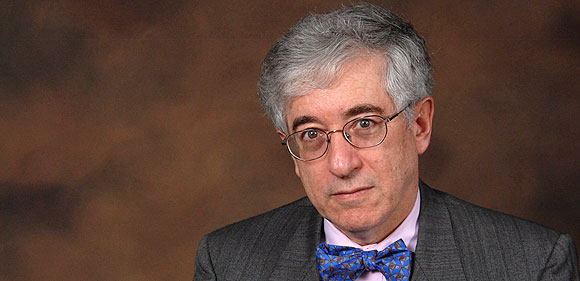On November 13th, Leon Aron, Director of Russian Studies at the American Enterprise Institute, presented his new book, Roads to the Temple, at the Harriman Institute (Columbia University). The event was co-sponsored by the Institute of Modern Russia. In his work, Aron analyzed the period of glasnost and the reasons for the Soviet Union’s collapse. At the presentation, he discussed similarities between the protest movement of the late 1980s, and the present-day Russian opposition.

Roads to the Temple is a profound and extraordinary study of the “mystery of the Soviet collapse”. Leon Aron finds the answers in the “intellectual and moral self-scrutiny of glasnost that brought about a profound shift in values.” As former Soviet President Mikhail Gorbachev noted in his review, “Leon Aron has written a book about the moral foundation of perestroika, and the colossal reassessment of values, which brought about an unprecedented and, for many, unexpected shift in Russian history. These were the years when we tried to bring together politics and morality.”
According to Aron, there are many reasons for the collapse of the Soviet Union, but not one of them fully explains it: there were structural and economic problems, but they were not overwhelming; there were no military losses; and the USSR was largely in control of the situation in Central and Eastern Europe. “In four years, the Soviet Union was cracked by something deeply rooted in its soul. In four years, something that seemed invincible became ridiculous and shameful. And it was glasnost that eventually created that shift in people’s minds,” explained the author.
The question, he says, was how to create a new decent state, how to construct a new citizen (to quote Chekhov, how “to squeeze a slave out of one’s soul”?) In Aron’s opinion, “national repentance and atonement for the mass crimes and murders” was key. Journalists, writers, and actors – as Aron calls them, “the trubadours of truth” – were in the avant-garde of the process of moral restoration.
Even though Roads to the Temple reviews the events of the past, this book could not be more timely. Mass protest rallies that were held in Moscow and other large Russian cities last winter once again brought up the issues of dignity, morality, and civil responsibility. In its demand for decency, the current protest movement is similar to the one of the late 1980s. “In 2011, I traveled across Russia as a part of my latest research project on grass roots organizations. And talking to the leaders of these organizations, I heard echoes of glasnost, morality concepts that I thought had vanished in 1991,” explained Aron. “Like the trubadours of glasnost, they were not scared of the state, nor did they lust for power. They just wanted dialogue.”
During the Q&A session, Leon Aron gave his assessment of the present-day opposition movement. He noted that the opposition lacked leadership and structure, which can be viewed as a weakness. But at the same time, it can be viewed a strength, because these factors make the opposition less vulnerable: it is difficult for the Russian authorities to control, undermine or bribe something that does not have a distinct structure. “These people [members of the protest movement] refuse to compromise, they are driven by moral rather than political demands, which is also both a weakness and a strength,” Aron said.
Leon Aron also made a prediction on the future of Vladimir Putin’s regime. “The end of [Putin’s presidential] term in 2018 could be the ‘perfect storm’. We hear economists forecasting that in 2014, the budget will have to be cut, despite high oil prices, because the state is so inefficient, and because so much had been stolen. And the 2014 Olympic Games [in Sochi] could be the turning-point. They are considered to be Putin’s brainchild, but they could turn into a nightmare. If [the authorities] cannot pull it off, the sense of shame could prevail within the Russian people,” suggested the author.

